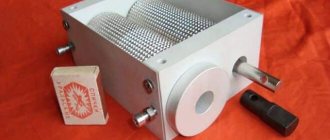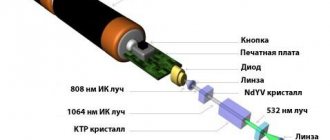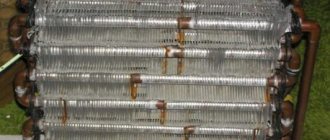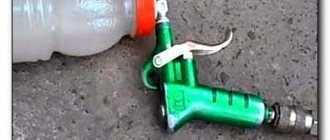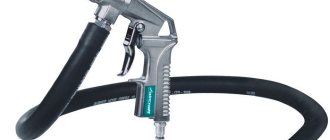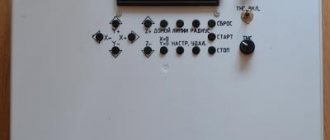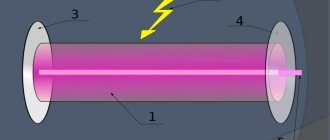What is a chiller?
First, it’s worth understanding what a chiller is in general. A chiller is a special device for cooling wort. The fact is that the brewed wort must be cooled as quickly as possible, otherwise we risk the entire batch. At high temperatures, bacteria multiply faster, which means the longer the wort remains hot, the greater the chance of infecting it with unwanted pathogens. Slow cooling also has a detrimental effect on the taste of homemade beer. The third factor that votes FOR a chiller is the volume of brewed beer. If the volumes are not large (5-10 liters), then cooling will take place quickly enough; just take a larger pan. But if you brewed 50 liters, you can’t do without a chiller.
Description of industrial chiller
Chiller (water-cooling machine) is a device for cooling liquid through a vapor-compression or absorption refrigeration cycle. After the temperature has decreased, the liquid is used to cool the air in the heat exchanger (fan coil) or to remove heat from equipment.
Operating principle of an industrial chiller
The device is used in various industries. A cooling unit in a connected system with a fan coil is used in some models of air conditioners.
Operating principle of an industrial refrigeration plant
In production, special absorption chillers are used as a rapid heat removal unit. It is necessary to ensure the operation of various industrial equipment that generates heat. The chiller selects and removes excess heat and maintains the optimal temperature and thermal conditions of the equipment. Lithium bromide in water is used in industrial installations as a liquid that absorbs gas in full.
During the cooling process of water, excess heat is released, which is released into the environment.
The industrial installation consists of two blocks:
- top - generating hot container with relatively high pressure;
- lower - includes an evaporation tank and a section with an absorbent.
Nature of operation of the installation:
- The heat from the generator affects the absorbent, which releases water vapor.
- The steam is transferred to the condenser and turns into a liquid state, giving off heat to a special reservoir of water.
- Having lost heat, water from the condenser is supplied to the evaporator.
- Here the water evaporates under pressure, absorbing heat from the refrigerated circuit (chiller).
- By pumping boiling water through a pumping unit, heat transfer is enhanced.
- At this time, the remaining absorbent concentrate is transferred to the absorber, where gas is absorbed from the evaporator and heat is released.
- The exhaust circuit removes heat from the absorbent container outside the installation.
- After the heat is removed, the resulting water and absorbent are again transferred to the generator.
Advantages of chillers over compression refrigerators:
- small amount of energy consumed;
- low noise emission during operation;
- environmental friendliness, because the working substance is plain water, not freon;
- absorb the released energy;
- long period of effective operation;
- industrial safety;
- ease of control.
Flaws:
- price;
- the need for a source of hot energy;
- heavy weight;
- high water consumption of the system.
Chiller for beer production
Water cooling machines are actively used in beer production. It is used to cool the wort. When receiving malt liquor, you need to quickly reduce the temperature. The quality of the drink depends on this. This broth contains beneficial and harmful bacteria. Beneficial elements are preserved at temperatures above 60°C, and all harmful bacteria die. But with slow cooling after 60°C, the likelihood of the appearance of harmful microorganisms increases. Therefore, it is necessary to reduce the temperature quickly.
The importance of the speed of the production process is also reflected in the fact that the fermentation process and the addition of yeast can only be carried out at a favorable temperature of about 20°C.
When the broth cools slowly, a large number of bacteria are formed. Yeast, when added, will not be able to absorb excess microorganisms. The drink will be spoiled. Slow cooling also impairs the commercial quality of the product.
Absorption chiller fan coil
Absorption devices differ from standard chillers in their structure and operating scheme. The principle of operation of an absorption chiller is based on the use of a lithium bromide (LiBr) solution, which absorbs vapors inside the unit, becoming a dilute substance. The resulting solution is sent to the generator, where it is heated and evaporated under the influence of steam or exhaust gases. The lithium bromide (LiBr) solution returns to its previous state and is sent to its sources - into the absorber. Meanwhile, the resulting steam from the water approaches the condenser to close the cyclic process and repeat the procedure again. Devices based on the absorption cooling system are used in industrial areas to carry out large-scale work.
Submersible evaporator for chiller
A plate evaporator is used for more powerful installations, usually with a cooling capacity of 10-15 kW, since with such powers a submersible (twisted) evaporator will be too bulky and will require a large container, which must be completely filled with cooled liquid, which is often the case in a production line not provided. Or the container should be inside the chiller, which, compared to a plate heat exchanger, will increase the dimensions of the chiller several times.
And in the production of industrial chillers with capacities over 150-200 kW, as a rule, shell-and-tube evaporators are used.
To a client wishing to buy an industrial chiller, the chiller manufacturer recommends one or another type of evaporator, indicating the pros and cons of its use.
The compressor-condensing unit for the production of a chiller can be taken in fact, almost any one in which the compressor corresponds to the temperature regime and the required cooling capacity (medium or low temperature). If this is a former air conditioner (or rather a split system), then you can unsolder the three-way valve and connect everything directly, if you do not need a heat pump function, as in a standard refrigeration unit - KM-KD-Receiver-TRV. And instead of an electronic board with a remote control designed for a split system, install conventional automatic motors and starters, block pressure switches, as well as a microprocessor controller with a temperature sensor.
The Internet is replete with various manuals and videos on how to make a chiller yourself; there are two main points that are often not mentioned anywhere, although their understanding is critical for high-quality assembly of the chiller.
Most often, those who want to assemble a chiller themselves use a submersible - twisted evaporator, as the cheapest and simplest option that can be made independently. The question is mainly about the correct manufacture of the evaporator, regarding the power of the compressor, the choice of the diameter and length of the pipe from which the future heat exchanger will be made.
To select a pipe and its quantity, you need to use a thermal engineering calculation, which can be easily found on the Internet. For those who do not want to make an accurate thermal calculation of the evaporator, for some reason, fixed power values will be given below. For the production of chillers with a power of up to 15 kW, with a twisted evaporator, the following diameters of copper pipes are most applicable: 1/2; 5/8; 3/4. Pipes with a large diameter (from 7/8) are very difficult to bend without special machines, so they are rarely used for submersible evaporators. The most optimal in terms of ease of use and power per 1 meter of length is a 5/8 pipe. Under no circumstances should an approximate calculation of the pipe length be allowed. If the chiller evaporator is not manufactured correctly, then it will not be possible to achieve either the required superheat, the required subcooling, or the freon boiling pressure, as a result the chiller will not work efficiently or will not cool at all.
Below are data on the thermal power that one meter of pipe can transmit. The data are not reference data, they were obtained by a combination of thermal engineering calculations and an empirical method, but at the same time they have been successfully used in the calculation of submersible evaporators for many years. The power values include a margin of ~3%.
Chiller evaporator data:
— Pipe 3/8 ~ 0.14 kW/1 meter of pipe = 0.029 m2 of heat transfer surface.
— Pipe 1/2 ~ 0.19 kW/1 meter of pipe = 0.039 m2 of heat transfer surface.
— Pipe 5/8 ~ 0.25 kW/1 meter of pipe = 0.049 m2 of heat transfer surface.
— Pipe 3/4 ~ 0.29 kW/1 meter of pipe = 0.059 m2 of heat transfer surface.
— Pipe 7/8 ~ 0.33 kW/1 meter of pipe = 0.069 m2 of heat transfer surface.
In practice, we have not used pipes with a diameter of more than 7/8 in the production of industrial chillers.
Also, one more nuance, since the cooled medium is water (most often), then the boiling point when (using water) should not be lower than -9C, with a delta of no more than 10K between the boiling point of freon and the temperature of the cooled water. In this regard, the low pressure emergency relay should be set to an emergency level not lower than the pressure of the freon used, at its boiling point -9C. Otherwise, if there is an error in the controller sensor and the water temperature drops below +1C, the water will begin to freeze on the evaporator, which will reduce and, over time, reduce its heat exchange function to almost zero - the water cooler will not work correctly.
Air conditioner chiller.
How to make a chiller from an air conditioner? — the question is actually the title of this thread.
The idea is quite simple. In our business, water is usually used to cool all kinds of moonshine iron. If the cooling system is closed (autonomous), then the water, after passing through the reflux condenser (distiller), is heated. You can cool it, for example, by passing it through a radiator blown with air. What if the air in the room is hot? Or you want to get the water colder, say 5-10 degrees, but in the room it’s still 25.
So I think the scheme is something like this. A storage tank, where there is a reserve volume of water, a supply pump, a heat exchanger-chiller, where freon cools the water by evaporation, our cooled piece of hardware, return with an additional air cooling radiator (optional) and back to the storage tank.
The question is the following: how to make a chiller (freon-liquid) from an air conditioner evaporator (freon-air)? I just don’t want to stick a standard evaporator into a jar of water. Maybe someone has experience of this kind or at least a link to the Internet with practical recommendations?
Last ed. 12 Apr. 10, 13:36 from igor223
Last ed. 12 Apr. 10, 14:04 from master24rus
master24rus
, there is an even simpler option - a coil in a container of water, from which the autonomous system pumps. The expansion valve (capillary) is placed at the inlet of this copper coil, which is the evaporator. Only this container needs to be thermally insulated from the external environment. I decided to do this in the morning, but suddenly there is a more elegant method.
What you are proposing is a flow-through heat exchanger. It’s also vital, although the “jar of water” you offer can, in principle, be reduced to zero. BUT - both here and there require small thermal and dimensional calculations. Which I'm too lazy to do myself. So I ask the collective mind. and he is still silent. almost silent))))
Okay, let's move on. The schematic diagram and operation of the window, which I am going to gut, is shown on this page
My window is different, but it doesn’t matter - they are all made according to almost the same design.
We bite off the evaporator, it turns out (most likely it will turn out) an air cooling radiator for return water.
The air temperature sensor, if it adjusts by 5-10C degrees, we put it in a barrel of water - if it cools below, the compressor turns off. If not, you will have to replace it.
My question is - what will happen if the water in the barrel cools down decently and the freon stops completely evaporating - then the compressor will fail. Who knows the answer, citizens?
Or am I again alone in the sandbox, playing with myself? )))
If the water in the barrel cools down decently and the freon stops completely evaporating, then the compressor will fail. Who knows the answer, citizens? igor223, 12 Apr. 10, 18:17
Last ed. 12 Apr. 10, 18:39 by SpankyHam
Well, here's a rough diagram.
Autonomous cooling with additional cooling of water to below room temperature.
For example, I use cold water to cool the product receiver during vacuum distillation and the vacuum distiller-shell-and-tube itself. This gives me the ability to work in a deeper vacuum (lower temperature). Yeast will live forever, gee-s-s.
Freon runs along its own contour, and water follows its own. Well, they change their temperatures. SpankyHam, 12 Apr. 10, 18:37
Great, quite satisfied. True - the compressor will rattle all the time - there is no cold storage tank - but to hell with it. We place it after the barrel of water; we do not insulate the barrel.
Freon needs to take two and a half kilos of heat from the water. (Nine air conditioners, and even then you don’t need that many - you just have it at hand)
How to calculate a heat exchanger made of two copper pipes - what is the diameter, what is the length?
The condenser coil is completely frozen with ice and nothing works anyway Master24rus, Apr 12. 10, 19:02
Making a chiller yourself
To quickly cool liquids at home, you can make a chiller yourself. Let's figure out how to make a chiller with your own hands.
Necessary materials
Requirements for materials for a do-it-yourself chiller:
- good thermal conductivity;
- suitability for food use;
- possibility of processing at home;
- strength;
- withstands temperatures up to 100°C.
Glass fits these criteria perfectly, but the problem arises with one parameter - the possibility of processing. Silicone is not suitable. It does not withstand high temperatures well and does not have the necessary heat transfer parameters.
There remains one type of material - metal. Options include aluminum, copper and stainless steel. With stainless steel there are complaints about price and heat transfer. Aluminum oxidizes and is unsafe for health. The best choice is copper.
Homemade chiller made from water pipes
What parameters need to be decided on:
- Tube diameter. A larger diameter will ensure a high level of heat transfer.
- The number of turns in the circuit. The more turns, the better the heat transfer.
- Overall coil diameter.
When calculating the required parameters, it is necessary to determine the volume of the container into which the chiller will be immersed to remove heat.
The diameter of the coil and the diameter of the tubes must ensure free immersion and maintain the same distance from the device to the walls and center of the container. You can make any distance between the turns, but the closer they are to each other, the more they can be created.
Do it yourself: freon chiller from an air conditioner
The idea of redesigning the cooling system of a laser machine has been in my head for a long time, but, as usual, my hands can’t keep up with my head. Initially, the work of cooling the “pipe” (laser emitter) was performed by a simple Chinese chiller, exactly like in the picture.
Its design is banal and simple: the liquid passes through a radiator made of an aluminum tube, which, in turn, is blown by a fan. Of course, there can be no talk of any temperature stability or power reserve. In the summer, a regular window air conditioner was purchased to accompany it, which simply cooled the air supplied to the chiller. The solution was temporary, but, as we know, there is nothing more permanent than something temporary.
The last straw was the upgrade of the machine to a more powerful “pipe”, which required more serious cooling. Initially, the choice fell on a Chinese freon chiller, but delivery times and costs turned out to be higher than expected, so it was decided to modify what was available. The system requirements were as follows:
• Stable temperature maintenance in the range of +8 ... +14 C • Autonomy • Ability to work in mode 247 • Less power consumption compared to the current system
The simplest thing that could be thought of was to immerse the cold part of the air conditioner in the liquid that directly cools the “pipe,” which is ultimately what was done.
We disassembled both devices, so recklessly that we forgot to take a picture of it. The outer casing, the fan impeller that blows through the cold part, the insulation and a pair of tin walls were removed from the air conditioner. We took out all the electrics and the expansion tank from the chiller.
It was decided to make the reservoir for the cold part from PVC 6mm thick, since there was an abundance of plastic; it can be easily cut with either a router or a simple knife. And it's easy to glue. In addition, I didn’t want to disassemble the freon part of the air conditioner - I would have to re-pressure the tubes, refill, etc. The tank was glued almost in place, creating a rectangular box 360x300x90mm, which was connected to the expansion tank using two fittings mounted on sealant and a hose.
(I apologize for the quality of the photo - I only had an old iPhone at hand)
We glued the top cover of the tank with a bolt as a plug for the gas outlet (not shown in the photo)
We connected the pump, operation indicators and alarm system from the old chiller, charged the system (antifreeze was used as a refrigerant), and turned on the air conditioner in the “chill until victory” mode. Pretty soon the thermometer showed +5 degrees.
After some time, the temperature dropped to -2 and continued to fall. At this point, it was decided to stop the tests and work on the visual component of the device. The front panel and top cover were made from a piece of thin plastic, the air intake hole was covered with a mesh, and the tubes were thermally insulated.
Then came the turn of the front wall (with an air intake closed by a mesh and a window) and thermal insulation of both vessels.
The air conditioner thermistor was inelegantly glued to one of the hoses using blue electrical tape.
What we got as a result:
Pros
+
the temperature does not rise above +14 degrees, does not fall below the dew point
+
the air conditioner operates in auto-temperature mode and cools for about 5 minutes, the next switch on occurs only after an hour and a half (the declared power of the air conditioner is 2500 W)
+
cheap (approximate prices are slightly lower )
Cons
-
general clumsiness of the solution
-
collective farm appearance
-
it would be more correct to place the temperature sensor from the air conditioner inside the expansion tank, slightly modify the circuit, calibrating it, say, to +12 degrees. Unfortunately, I am frankly weak in electronics and have little idea how to do this.
The chiller has been working successfully for the second month, it doesn’t leak, it cools, it maintains the temperature. In a word, he does what he should do.
Materials and prices:
• window air conditioner - we got it for 2000 rubles
• universal remote control for air conditioning - approximately
300 rubles
• antifreeze (30l) -
1500 rubles
• pump -
600 rubles
• thermometer, wires, relays, sensors -
500 rubles
• plastic, glue, fittings, ties, blue electrical tape -
1000 rubles
Total approximately 6000 rubles
. Agree, a pleasant amount, especially for a refrigerator of such power.
Options for cooling water in a home aquarium
Knowing the three main ways to effectively cool water in an aquarium, you can save the lives of the small inhabitants of your home “reservoir”. The presence of such a device in the house will help maintain the required temperature level throughout the day, which means it will ensure comfortable life for the inhabitants of the aquarium. Create favorable conditions for your fish and notice that they get sick less often and stop dying.
Assembly
Here photographs will help more than a lengthy description in words.
I started by insulating the water blocks. The block was filled with foam, after drying, insulation was placed on the tubes and the whole thing was covered with electrical tape.
This way I insulated all three water blocks.
All that remains is to isolate the motherboard. I smeared the entire space around the socket and chipset with dielectric grease, did the same with the blocks, then made gaskets from foam rubber. I treated the back side of the motherboard and video card in the same way, then installed foam rubber and secured it with acrylic plates.
When the blocks were ready, I started working on the air conditioning. I completely disassembled it, being careful not to break anything.
To easily and painlessly bend the tubes in the right places, I recommend using a tool called “pipe bender” (I don’t know the exact Russian name).
The air conditioner evaporator is installed in the tank.
The same foam was used for insulation; I attached the temperature sensor to the pump installed inside.
Then I insulated the pipes near the compressor and installed a fan to cool the condenser.
After that I added methanol. The first check in a couple of hours showed the following results:
The water chiller freezes the refrigerant rather slowly, but the reverse process occurs in a well-insulated tank for quite a long time. After 12 hours of inactivity, the temperature rose to just -12C. And now - the final stage, installation into the system. Be sure to make every effort to insulate both the water blocks and the circuit boards. As you can see, the goal has been achieved - the processor is pleasantly cool at -9C.
System components
The easiest way to assemble a chiller is based on a household air conditioner. It is advisable to find an air conditioner that uses R22 gas rather than R134a, since R22 evaporates at a lower temperature. A refrigerator system is also suitable for these purposes. I used a 5000BTU air conditioner, they usually have 1/2 HP compressors.
Any container with thermal insulation will be suitable as a reservoir, but in extreme cases you can make it yourself. In my case, this is an insulated cold water tank.
The main headache for those who venture into extreme cooling is thermal insulation to prevent condensation. The simple methods described in the article “Thermal insulation of water blocks” will no longer be enough if the temperature approaches zero and below. Therefore, “heavy artillery” will be used. For heat exchangers - polyurethane foam filler and insulating tape, for tubes and hoses - closed-cell foam rubber. It is necessary to use dielectric grease for the places where the water blocks are installed (a silicone coating can also be used, but then it cannot be removed from the boards).
The actual components of the water cooling system, water blocks and pump. My kit consists of PolarFlo CPU waterblock, Danger Den Z-Chip block, Swiftech MCW50 VGA block and Rio Aqua 1400 pump.
The next question is the choice of refrigerant. In this case, I was guided by two parameters: the liquid should not freeze at low temperatures and have the highest possible thermal conductivity. For low temperatures, antifreeze is suitable (who would doubt it;)), vodka or a mixture of water + methanol. I chose methanol: it is poisonous (attention!), but has the best thermal conductivity. One of the easiest ways to get it is to buy windshield wiper fluid at an auto store.
Chiller device for a small brewery
In fact, a chiller operating on the principle of a moonshine still exists. Hot wort is driven through the coil, and the external chiller itself is immersed in cold: running water or a container with the same ice.
The efficiency of such a device is higher than a saucepan immersed in a tub of ice. And yet, when hot beer moves through pipes, instantaneous cooling does not occur.
The next stage of technology is a plate chiller. It is a classic honeycomb radiator in which wort moves through tubes. In the outer container, cold water moves towards the wort. Thanks to counterflow, the chiller cools the beer almost immediately. The only drawback is that while the hot wort is moving through the pipes to the chiller, the negative processes have time to do their “dark and muddy” work.
The most efficient is the immersion cooler. This is a spiral-shaped chiller with refrigerant in the tube. When the heat exchanger (more precisely, the cooler) is turned on, the wort is cooled instantly.
The formation of bacteria does not occur; the rags of bruja immediately bind and settle to the bottom. And dimethyl sulfide, in principle, cannot be formed at such a rate of temperature drop.
The diameter of the tube is selected depending on the volume of cooled liquid. There is a principle of reasonable sufficiency: a chiller spiral that is too thick will require a powerful refrigeration unit.
The material used for production is neutral: usually copper. You can try food-grade aluminum, but it is too fragile for such temperature changes. They also use stainless steel tubes, although they are more expensive than copper ones and are much more difficult to bend.
3 secrets for making a do-it-yourself submersible chiller
The first secret is the diameter of the tube; the larger the diameter, the larger the heat transfer area!
The second secret is the number of turns - the principle is the same
The third secret is the coil diameter.
It is worth noting that all 3 of these parameters significantly affect the price. So, if you want to make a cheaper chiller, then know that the price is not only in rubles, but also in efficiency.
How to use a homemade beer chiller
We immerse the chiller in the center of the pan, connect it to the tap, lower the other end into the sink, and open cold water! All! You can stir the wort to cool evenly.
Sources
- https://homebeer.csutio.ru/oborudovanie-dlya-varki-piva-doma/kak-sdelat-chiller-dlya-piva-svoimi-rukami/
- https://vozduhstroy.ru/kondicionery/chiller-svoimi-rukami.html
- https://cp-h.ru/tehnicheskaya-informatsiya-po-holodiljnoy-tehnike/chiller-svoimi-rukami.html
- https://teplobloknn.ru/oborudovanie/samodelnyj-chiller.html
- https://saiding-v-permi.ru/oborudovanie/chiller-protivotochnyj-svoimi-rukami.html
- https://varimtutru.com/chiller-iz-nerzhaveyki-svoimi-rukami/
- https://paes250.ru/delaj-sam/kak-sdelat-chiller-svoimi-rukami.html
[collapse]

